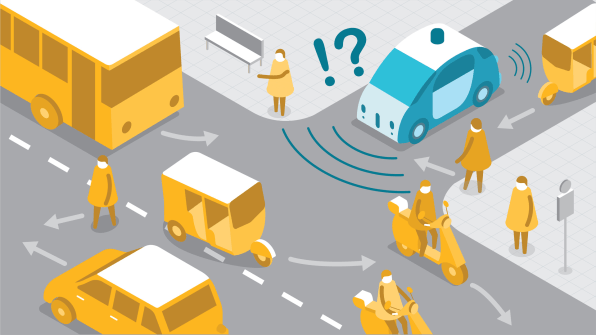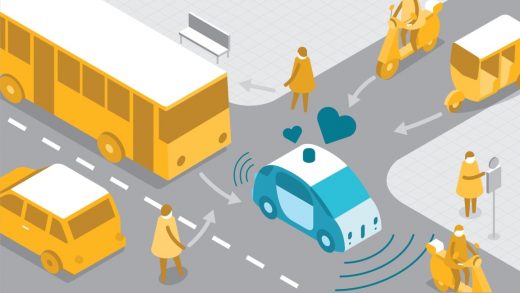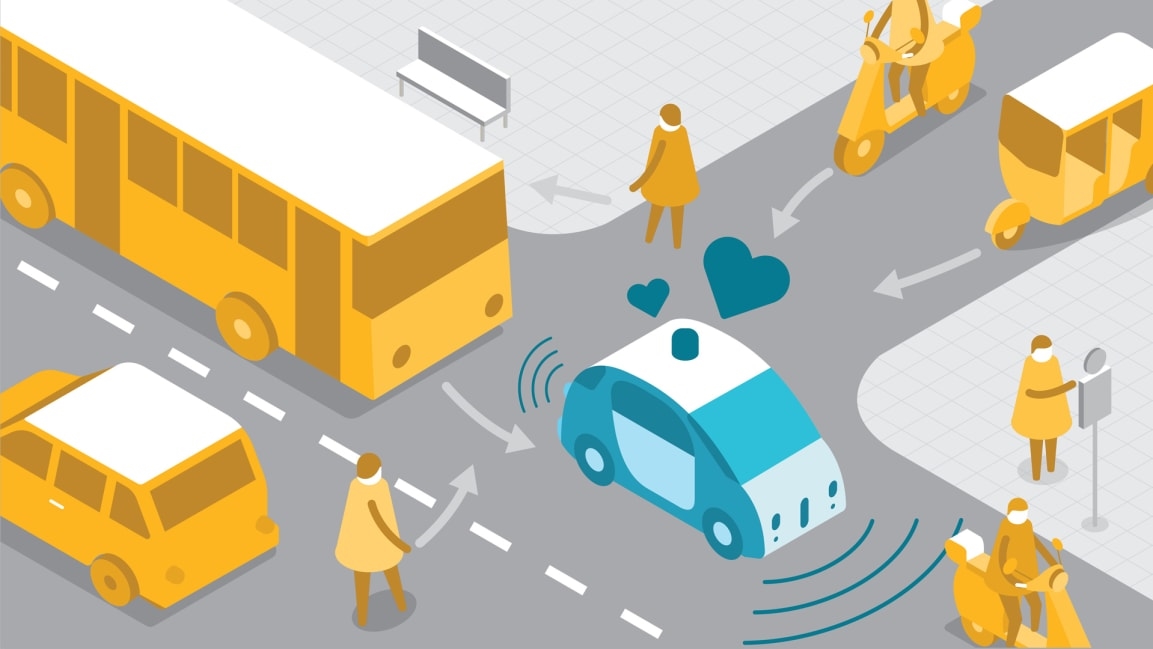The problem with autonomous cars that no one’s talking about
By Jasper Dekker
On a recent research trip, I found myself in the back of a taxi in New Delhi, amid a dizzying mix of car horns and exhaust. What initially seemed like complete chaos—a flurry of cars, buses, auto-rickshaws, motorbikes, and the occasional cow—turned out to be a flow of traffic where everyone works together to keep everything moving. People gave each other just enough space to merge into lanes or roundabouts without stopping. This is considered rude in the West as we’re taught to wait for those who have the right of way, but it’s perfectly normal in India.
So I began to wonder: How would a California-trained autonomous vehicle handle this traffic culture? Beyond the official rules of the road, social and cultural norms define the way we actually drive, and how we treat each other on the road. This behavior culminates to create a traffic culture that is very specific to each place. Without knowledge of the traffic culture it finds itself in, an AV would be paralyzed. If engineers and designers fail to find a way to help AI understand different traffic cultures, we run the risk of excluding a large part of the planet’s population from a new frontier in transportation.
Train AI to drive like locals, with locals
Earlier this year Tesla showed the public how its artificial intelligence is trained. The company’s fleet of consumer-driven cars constantly feeds camera footage back to California for its AI to shadow in the background. Tesla says this captures every possible situation and aspect of human behavior, especially the ones that go beyond our imagination. It’s an effective and scalable way to train AI, but it’s limited to where Teslas currently drive around, creating a bias toward Western traffic cultures and parts of China. Obviously, Tesla isn’t the only one developing autonomous capabilities, but the pattern is similar for other AI developers and carmakers; they train their AI in their own backyard.
To successfully deploy AVs in places all around the world, AI needs to be trained locally by applying learning in hyper-local feedback loops to identify unique patterns. This locally trained AI layer could then be added on top of a universal AI layer that takes care of the vehicle’s basic ability to drive from point A to B. By combining these two layers of artificial intelligence, AVs could not only drive more safely, but also blend in and drive like a local in traffic.
Of course, carmakers are nowhere near ready to roll out AVs onto our streets. The closest people can come to experiencing autonomous driving is through a semi-public pilot currently happening in a carefully selected neighborhood in Phoenix, where users can hail a ride in an autonomous car (which still has a human “driver” overseeing the ride). As a result of pilots such as this—and if the AI powering AVs improves—we might start seeing similar scenarios more often and in more places. But this is where local training for AI is particularly important: when AVs share the road with human drivers. Local training could potentially decrease the risk of conflicts between human drivers and AVs, and it could make the AV experience feel more familiar to passengers.
A more inclusive AI
So what might that look like? With locally trained AI, requests like asking a car to hurry up or slow down may have different outcomes across different traffic cultures. Honking in New Delhi proved to be a valuable communication channel for awareness; elsewhere, light signals alone may be enough.

Before autonomous vehicles are rolled out, they could first go through a training program where they absorb the local traffic culture safely. For example, in New Delhi, they would learn to give audible signals to let human drivers know they’re in their blind spot, discover the leeway around changing lanes, or understand the appropriate distance to other vehicles. It would be up to carmakers and governments to define what such a training program entails and how AVs can graduate.
The larger challenge is to foster mutual understanding between users and AI so that they can effectively operate together. Before AVs make their way into cities, we need to make sure they aren’t culture blind.
Jasper Dekker is a senior interaction designer at Smart Design. His work in the mobility space includes award-winning projects for automotive companies such as Ford and clients operating on the forefront of AI.
(44)



